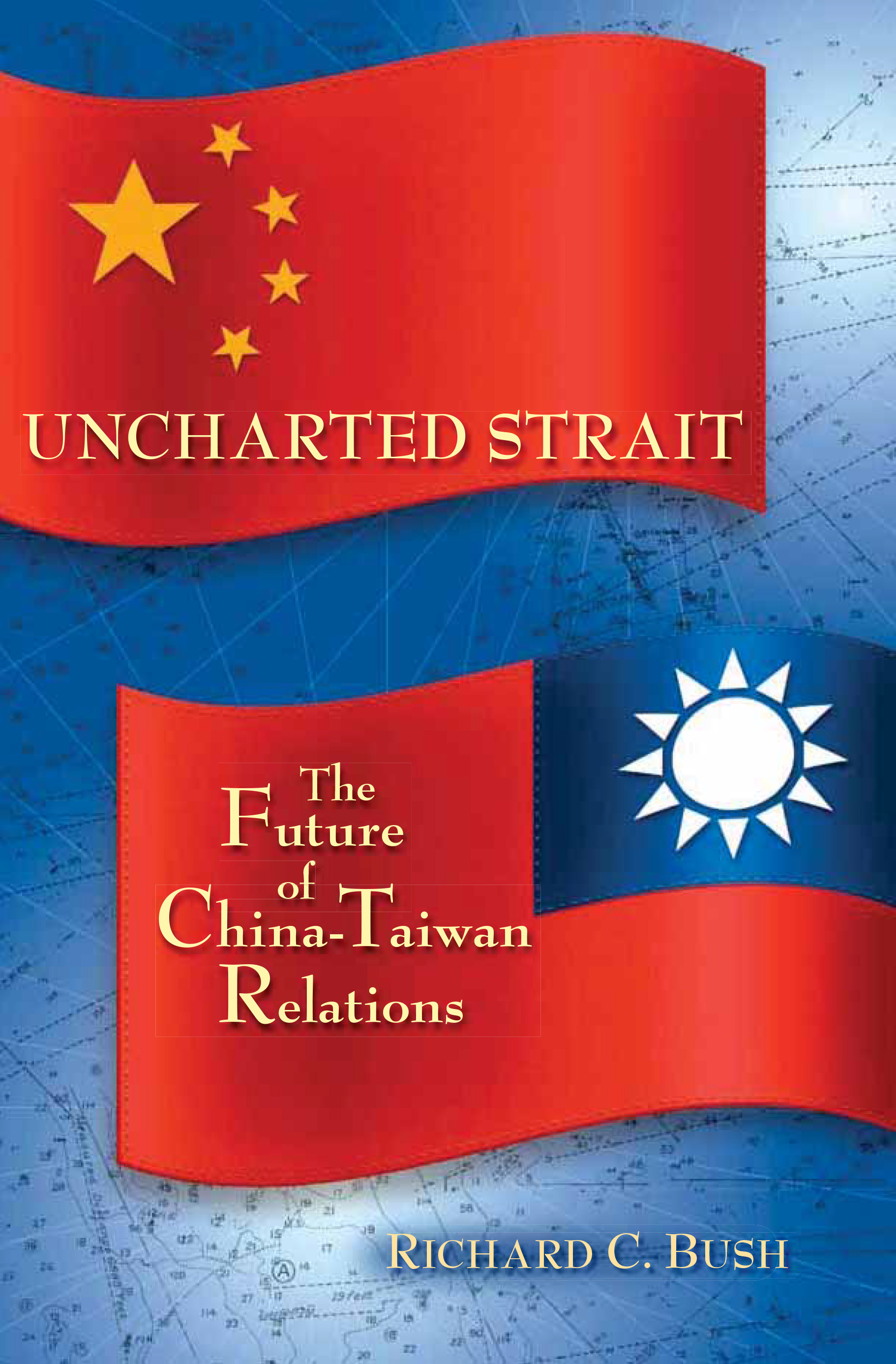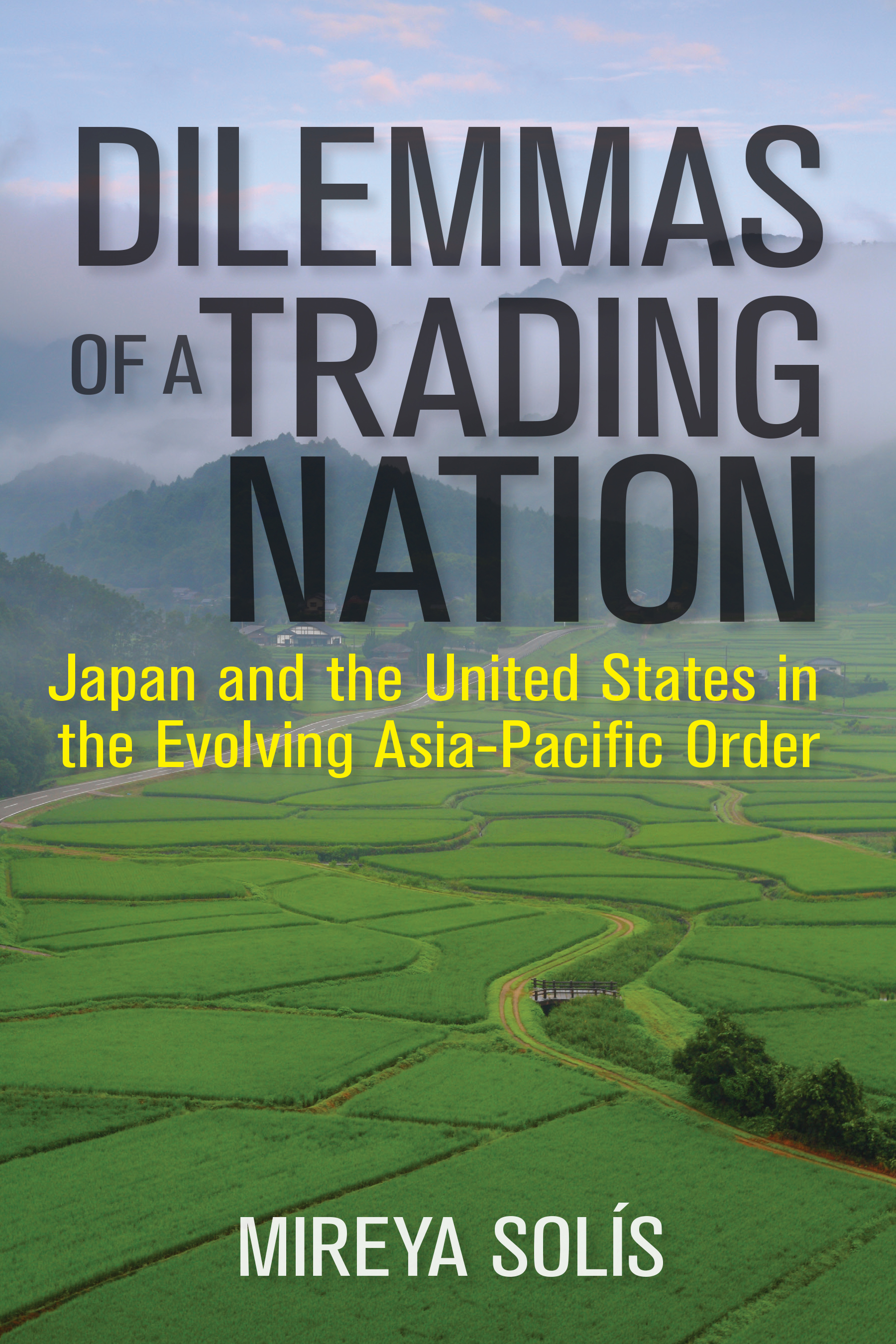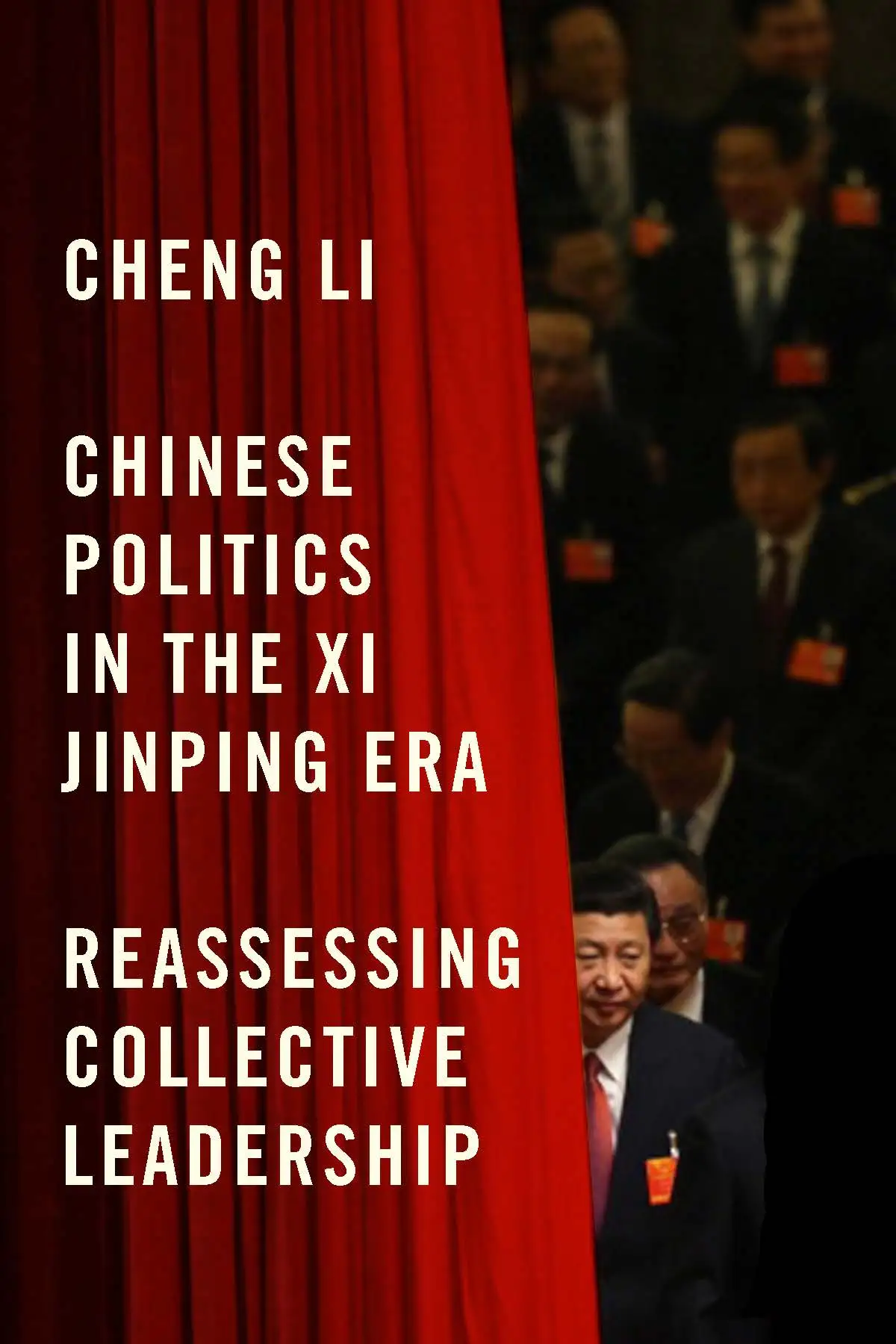For decades, a cohort of U.S. diplomats, military officers, strategists, scholars, and analysts have developed deep expertise in managing U.S. policy on Taiwan and on cross-Strait affairs. They studied the process leading up to Richard Nixon’s rapprochement with the People’s Republic of China in 1971 and 1972, Jimmy Carter’s handling of the normalization of relations and the U.S. Congress’ passage of the Taiwan Relations Act in 1979, and Ronald Reagan’s interpretation of the 1982 U.S.-China joint communique. They mastered the “sacred texts”—the three joint communiques, the Taiwan Relations Act, and the Six Assurances. They built long-standing relationships and established credibility in Taipei and Beijing. They understood the stakes of how the U.S. approach to Taiwan and cross-Strait issues could impact the United States’ standing in Asia and regional stability. And this group collectively served as a protective shell around one of the most sensitive and delicate foreign policy challenges the United States has confronted over the past 40 years.
While history never moves in a straight line and there were times of testing, by and large, U.S. policy on Taiwan and cross-Strait issues has succeeded in protecting top U.S. interests. The United States has simultaneously made significant strides in deepening unofficial ties with the people of Taiwan, developed U.S.-China relations amidst China’s historic and far from preordained rise, all while managing its enduring interest in cross-Strait peace and stability.
Despite the absence of formal diplomatic ties, U.S.-Taiwan relations have flourished. In May 2015, then Deputy Assistant Secretary of State Susan Thornton described Taiwan as “a vital partner,” who “shares our values, has earned our respect, and continues to merit our support.”1 This partnership is exemplified by Taiwan becoming the United States’ 10th-largest trading partner in goods, its seventh-largest export market for agricultural products, and its seventh-largest source of foreign students in U.S. schools.2 Trade with Taiwan and Taiwan’s inbound investment into the United States support over 320,000 U.S. jobs. Taiwan has become a model citizen on the global stage, contributing considerably to addressing transnational challenges ranging from climate change to terrorism and North Korea. U.S.-Taiwan security cooperation has been strong and consistent. Since 2010, the executive branch has notified the U.S. Congress of more than $15 billion in arms sales to Taiwan, and during that period, U.S.-Taiwan military exchanges and engagements have also grown considerably. At a less quantifiable level, Taiwan’s democratic journey has served as a source of inspiration and knowledge for many throughout Asia.
U.S.-Taiwan relations also have served as a powerful symbol for allies and partners in East Asia and beyond. For instance, Tokyo and Seoul view the unofficial relationship as a bellwether of Washington’s determination to stand by principles and support friends, even when doing so can generate friction with Beijing.
The steadiness in the U.S. approach has played a stabilizing role in cross-Strait relations. The United States has been unwavering in its conviction that any resolution of cross-Strait differences must be achieved peacefully and in a manner acceptable to people on both sides of the Strait. In the case of Taiwan, this means that any resolution must reflect the democratic will of the people on Taiwan. It has opposed unilateral changes to the status quo by either side of the Strait. It has refused to play a mediating role between Beijing and Taipei, pledged not to pressure Taiwan to negotiate with the mainland, and rejected any notion that the United States would use Taiwan as leverage in its dealing with the mainland. At the same time, the United States has steadily developed its relationship with Beijing. Over the past 40 years, U.S.-China relations have grown from a tenuous leaders-level link to one of the most integrated, complex, and consequential bilateral relationships in the world. Washington and Beijing have managed to compartmentalize their differences over Taiwan and avoid having them obstruct the ties that hold their relationship together.
The long-standing U.S. approach to cross-Strait relations was briefly called into question on December 2, 2016, when then President-elect Donald Trump spoke by phone with Taiwan President Tsai Ing-wen, which eroded a long-standing norm on preserving the unofficial nature of U.S.-Taiwan relations. Nine days later, Trump suggested that Taiwan could be used as leverage with Beijing to help secure concessions on trade.3 Then, two months later, when it became apparent that Chinese President Xi Jinping would not entertain any consideration of concessions and instead would freeze contact with Trump, the newly elected president backtracked, pledging to Xi in a phone call that he would “honor” the United States’ “one China policy.” This episode laid bare the risks of freelancing on such a sensitive and finely attenuated policy.
This episode also sparked a healthy bout of self-reflection in Washington’s policy community about whether the three parties are on track to sustain the peace and progress of the past 40 years. In particular, the three central actors—Washington, Taipei, and Beijing—have three different narratives to explain cross-Strait trend lines. All three parties will need to avoid becoming trapped in their own narratives by listening carefully to how the other parties are assessing developments. If they do not, there is risk that these differing narratives will lead the parties in divergent directions, with potentially significant consequences for cross-Strait peace and stability.
The mainland’s view of cross-Strait relations
President Xi is now steering China toward the great rejuvenation of the Chinese nation, with a deadline for the project set at 2049, the centenary of the founding of the People’s Republic of China. A central element of this goal is making the Chinese nation whole again, according to Beijing’s conception of its boundaries.
Attendees at the 19th Communist Party Congress presentation of the work report by President Xi reflected this sentiment when they reportedly provided the loudest applause of a three-plus hour speech to the following lines:
We stand firm in safeguarding China’s sovereignty and territorial integrity, and will never allow the historical tragedy of national division to repeat itself. Any separatist activity is certain to meet with the resolute opposition of the Chinese people. We have the resolve, the confidence, and the ability to defeat separatist attempts for “Taiwan independence” in any form. We will never allow anyone, any organization, or any political party, at any time or in any form, to separate any part of Chinese territory from China!4
Beijing’s famously high sensitivity over Taiwan issues is likely to grow stronger as the 2049 centenary celebration draws nearer. Beijing is likely to grow increasingly hostile to any actions that actually or optically support any semblance of permanent separation of Taiwan from the mainland. Signs of this trend are already visible. Over the past year, Beijing has grown concerned that Taiwan President Tsai is seeking to advance a campaign of “de-sinification” in Taiwan as part of a strategy to add distance between both sides of the Strait. Beijing has cited proposed revisions to textbooks to reframe the history around events on Taiwan (and not on both Taiwan and the mainland) and initiatives to protect aboriginal groups’ unique cultural and linguistic traditions as efforts by Tsai and others to cultivate a growing Taiwan identity—particularly among the youth—that is distinct from the mainland. Beijing worries that as new generations in Taiwan grow up with no personal or familial connection to the mainland, they increasingly will view the mainland as foreign and distinct from Taiwan.
Perhaps not coincidentally, Beijing over the past year has steadily ratcheted up pressure on Taiwan, and on President Tsai specifically, in hopes that such pressure will cause Taiwan citizens to conclude that their future will improve by moving closer to the mainland. This strategy also has been informed by a prevailing view in Beijing that even if Tsai has been moderate in her approach to cross-Strait issues to date, she nevertheless harbors ulterior motives of distancing Taiwan from the mainland and should not be granted the benefit of the doubt. Examples of steps Beijing has taken to dial up pressure include:
- Reducing numbers of mainland tourists and students in Taiwan;
- Restricting space for Taiwan participation in multilateral fora;
- Expanding the tempo of Chinese military operations on all sides of Taiwan;
- Raising the public profile of military capability developments that would be applicable to a cross-Strait confrontation;
- Publicly moving the cross-Strait goalposts by insisting that President Tsai acknowledge the “1992 Consensus” with the same interpretation on both sides of the Strait (in contrast to Beijing’s acceptance of Ma Ying-jeou’s acknowledgement of the “1992 Consensus” with different interpretations);
- Wooing recent graduates in Taiwan to work in China through higher salaries and more affordable housing; and
- Gradually poaching from Taiwan’s dwindling list of diplomatic allies.
To be clear, Beijing’s actions to date appear to have been calibrated to serve as warning flares to compel behavioral moderation, and not as signals of any imminent use of force by Beijing against Taiwan. Even so, at a minimum, Beijing is making clear that its patience is not limitless, that it will not tolerate permanent separation of Taiwan from the mainland, and that it views reunification as a key element of the great rejuvenation of the Chinese nation.
The quinquennial National Congress of the Chinese Communist Party of China provides some insight into China’s plans. Since 2002, the general secretary and Party Congress work reports have used broadly consistent language to describe the mainland’s approach to Taiwan. As our Brookings colleague Richard Bush assessed, Xi Jinping’s report given to the recently concluded 19th Party Congress was largely consistent with previous articulations, except with the notable omission of a declaration that the mainland will place hopes on the Taiwan people as a force to help bring about unification.5 This exclusion could reflect an acknowledgement that the identity of people on Taiwan is becoming less connected with the mainland and more linked to an association with Taiwan. But it raises the question of whether Beijing will respect the wishes of the citizens on Taiwan, or whether Beijing will rely more on its own national power to achieve unification as it becomes less confident that political forces in Taiwan will move the island closer to the mainland. For instance, Beijing has sought to foment debate in Taiwan around politically divisive domestic issues, such as pension reform, in an effort to undermine the public’s trust in Taiwan’s government. Such activities have raised concerns in Taiwan of the potential impact that Beijing-funded organizations or pro-unification media pundits could have in influencing public discourse in Taiwan.6
Taiwan’s view of cross-Strait relations
Whereas leaders in Beijing feel the pressure of time, leaders in Taipei project a sense of patience in their approach to cross-Strait issues. The people of Taiwan are conditioned to living with cross-Strait tensions and therefore broadly support maintaining the cross-Strait status quo. The focal point of political debates in Taiwan is not on competing approaches to cross-Strait issues, but rather on the question of how to strengthen Taiwan’s economic competitiveness in order to improve the quality of life of its residents.
At present, the ruling Democratic Progressive Party (DPP) is the dominant political organization on the island. The opposition Kuomintang, which is Beijing’s preferred political interlocutor, is a significantly weakened political force following the 2016 elections. This absence of viable alternatives gives the DPP confidence that as long as it does not take actions that could be construed as changing the cross-Strait status quo, it can afford to be patient. The DPP leadership believes that sooner or later Beijing will have no choice but to deal with them and that leverage works in both directions in the cross-Strait relationship. For instance, the mainland increasingly is seeking outside investment to spur economic innovation and jobs, and Taiwan is the mainland’s second-largest investor. The Tsai administration, through its New Southbound Policy, is encouraging Taiwan’s businesses to look at diversifying and shifting investment to markets in Southeast Asia. If such a shift occurs, it could reinforce that Taipei has ways to make its views felt in Beijing, just as Beijing does in Taipei.
While cross-Strait relations and the issue of perpetuating the status quo played a role in Tsai’s election, her campaign and the DPP leadership predominantly focused on domestic issues and Taiwan’s presence in the broader international community. Specific focus areas include modernizing the economy, shifting the island to greater reliance on renewable energy, diversifying trade and investment relationships to reduce risk of overreliance on the mainland’s market, and moving the island closer diplomatically to other major actors, such as the United States, Japan, India, Australia, and the European Union. Tsai recognizes that Beijing has the capacity to flip Taiwan’s few remaining diplomatic allies, and thus has sought to refocus the debate on Taiwan’s foreign policy away from factors she cannot control. Her shift emphasizes Taiwan’s role on the world stage and the substantively meaningful partnerships with major powers, even if it does not have official diplomatic relations with them.
The DPP leadership views the aforementioned efforts to revise textbooks and protect aboriginal cultures as issues related to Taiwan’s internal politics, and not as bargaining chips in cross-Strait affairs. So, while the Tsai administration believes it currently is prudently pursuing a hedging strategy within the bounds of the cross-Strait status quo, Beijing fears that Taiwan is advancing a strategy to distance Taiwan from the mainland.
In the short term, Beijing has not shown interest in altering its stringent position toward Tsai. Beijing has refused to maintain direct and authoritative channels of communication with the Tsai administration. This absence of formal communication has heightened the risk of mutual misunderstanding of intentions, particularly since Beijing suspended official contact in June 2016.7
The United States’ view of cross-Strait relations
Officials in Washington are concerned about Beijing’s intentions, the limits of Taiwan’s ability to resist coercion, and the risk that Taiwan’s dynamism will diminish as Beijing isolates the island further over time. This leads Washington to try to heighten Taipei’s sense of urgency to take steps to strengthen itself. Meanwhile, the United States urges Beijing to exercise restraint and be self-aware of how its actions impact the attitudes of Taiwan residents toward the mainland.
In October 2017 during a speech at Brookings, American Institute in Taiwan Chairman Ambassador James Moriarty outlined Taiwan’s contributions within the international community, reiterated the enduring nature of U.S.-Taiwan relations, and called for the classic cocktail of “patience, flexibility, and creativity” in cross-Strait relations. Reflecting Washington’s overall approach, Moriarty acknowledged President Tsai’s “determination to maintain stable cross-Strait ties in the face of increasing pressure from the PRC on a number of fronts,” just as he also stated that Taiwan “can and must do more as the security threat against it continues to evolve.”8
In particular, through its engagements with Taipei, U.S. officials emphasize security issues such as military preparedness and reserve force readiness. U.S. officials urge Taiwan to draw lessons from the defense investments by peers facing similarly daunting security challenges, such as Israel, Ukraine, and South Korea. They encourage Taiwan to prioritize military investments on asymmetric and innovative capabilities that will enable Taiwan to utilize its geographic advantages and enable low-cost solutions for degrading mainland military capabilities. U.S. officials encourage Taiwan to advance domestic reforms that will spur economic competitiveness and concentrate efforts on securing greater market access for partners around the region and beyond. On that score, Washington also pushes Taiwan to remove impediments to closer U.S.-Taiwan trade ties, namely its restrictions on U.S. beef and pork imports.
While such efforts risk coming across as overbearing to counterparts in Taipei, they nonetheless are animated by a U.S. desire to help Taiwan strengthen itself. Washington sees Beijing casting an ever-larger shadow over Taiwan, and worries that over time this shadow will limit Taiwan’s economic vibrancy and political stability. These worries have taken on new salience in the past five years, as the scale of Xi’s ambitions have raised concerns over the potential for Beijing to use more coercive power on Taiwan. Overall, Washington’s concerns appear driven by an assessment that Beijing is growing more impatient and Taipei risks being overly complacent about possible challenges on the horizon.
What to do?
Good strategy starts with a clear conception of objectives. In the case of Taiwan and cross-Strait relations, U.S. objectives include preserving cross-Strait peace and stability and










